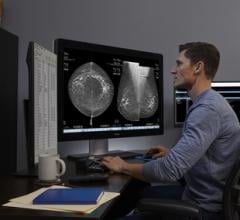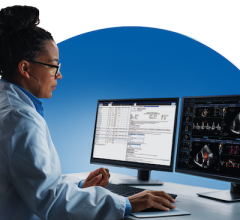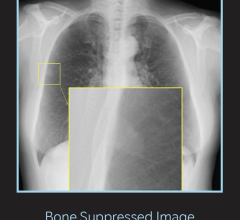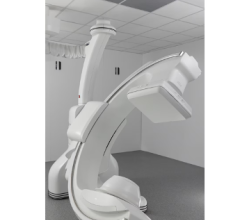
Dave Fornell is the editor of Diagnostic & Interventional Cardiology magazine and assistant editor for Imaging Technology News magazine.
Blog | November 04, 2014
Key Imaging Technology Trends to Watch for at RSNA 2014
All major technology advances in the world of radiology and imaging are unveiled or highlighted at the Radiological Society of North America (RSNA) annual meeting in Chicago. This makes it the ideal place to see how the vendors are responding to legislative mandates, economic factors and how new advances in technology are likely to impact how healthcare is conducted in the coming years.
Based on trends and new product releases Imaging Technology News (ITN) magazine monitors throughout the year, here is a list of some of the items I expect to be the hot topics at RSNA 2014.
Women’s Health
Breast imaging has seen a lot of increased interest in the past year. A lot of this has to do with the rapid expansion of 3-D mammography, also known as digital breast tomosynthesis (DBT). Another important factor is the new legislation in several states and pending in Congress to require clinicians to inform women if they have dense breasts, which can greatly limit diagnostic accuracy in traditional mammography. Until recently, there was not much that could be done for women with dense breasts, but advances in breast MRI, automated breast ultrasound (ABUS) and tomosynthesis now offer options to better screen these patients. Of these, tomosynthesis will likely become the primary modality, since it is substantially similar to current mammography workflows. It also offers the ability to view slices of the breast to better differentiate actual lesions from areas of overlapping dense tissue. Imaging centers across the country are leveraging their new tomosynthesis machines in public ad campaigns to attract new patients.
Radiation Dose Reduction
Well publicized overdoses of ionizing radiation from CT scans have inspired legislation in both Texas and California to force hospitals and imaging centers to now record and monitor patient dose exposures. Other states are expected to follow suit with their own legislation. Additionally, earlier this year the Joint Commission changed its rules for credentialing facilities by now requiring dose-recording software so facilities can get a handle on doses used and how to reign in high-dose outliers. Congress also passed H.R. 4302 earlier this year, which delays the large cuts in Medicaid called for by the Sustainable Growth Rate (SGR) if imaging facilities meet new requirements for stricter patient radiation dose safety controls in efforts to lower dose. Expect to see many new software options on the show floor that record the dose from each exam from multiple X-ray and nuclear imaging modalities. These systems often package that data into dashboard management apps to monitor doses based on specific machines, protocols, departments and technologists. Some software will also help interface data for easier upload to the American College of Radiology (ACR) Dose Index Registry.
Enterprise Imaging
“Enterprise” recently has become a major buzzword in imaging and this year many vendors will feature solutions that enable image and report access anywhere in a hospital or healthcare system without the need for dedicated workstations. Enterprise imaging also is likely the next evolutionary step in image storage and management, which will take the responsibility for imaging management away from radiology and place it into the hands of IT. Also, as imaging expands to include digital files from all hospital departments (pathology, orthopedics, cardiology, radiology, OB/GYN, internal medicine, etc.) access to images will no longer need to be routed through the radiology PACS or dozens of potentially incompatible image storage systems. Enterprise imaging is often tied to Web-based software systems and a vendor neutral archive (VNA). These usually use Web-based cloud computing vendors that offer virtually unlimited storage capacity, while at the same time offering a disaster recovery solution. Use of vendor neutral platforms is supposed to enable easier integration of data from disparate systems throughout the hospital so it can be made available in one place via the electronic medical record (EMR). Interoperability has greatly improved in recent years, but buyers should be watchful, as some systems interface better than others, and all will have some technical hiccups.
Less Expensive and More Efficient Imaging Systems
Due to the economic downturn, stagnation in healthcare capital spending due the uncertainties involved with the Affordable Care Act (ACA) and declining reimbursements, vendors now offer a variety of more affordable imaging systems than in the past. Additionally, all imaging systems and software are now graded for workflow efficiency and patient throughput, where speed and automation to save staff time are key.
Concentration of IT, Not Imaging Hardware
While PET/MR and state-of-the-art high-slice CT scanners are innovative and have a certain "wow" factor, the RSNA show floor has largely transitioned to being an imaging software marketplace. Note that actual imaging systems have only briefly been mentioned; the bulk of the technology is IT-related. One will be hard-pressed to find anything regarding the gasping corpse of analog imaging on the show floor, since everything imaging today is digital. This includes the image files, the reports, and how that data is stored, attached to EMRs and transferred to referring physicians.
The ACA pushes healthcare reform almost entirely through IT innovations and the digitalization of healthcare in an effort to make data more accessible and efficient. As Stage 2 meaningful use criteria begins to creep into specialties such as radiology and all others that rely on imaging, greater emphasis will be placed on some key new technologies on the show floor. This includes computerized physician order entry (CPOE) for imaging orders. Patient engagement is a key element, which more than likely will center on easy-to-use patient portals that are smartphone friendly to access their medical images, test results, etc. Another biggie for Stage 2 is remote viewing systems that allow easy image access to anyone who needs to see them and is not connected to the PACS. There has been an explosion of these remote image viewing systems over the past couple years. The new normal for most of these apps is to be tablet- and smartphone-friendly to allow image and report access anywhere a physician happens to be.
© Copyright Wainscot Media. All Rights Reserved.
Subscribe Now


 December 17, 2025
December 17, 2025 









